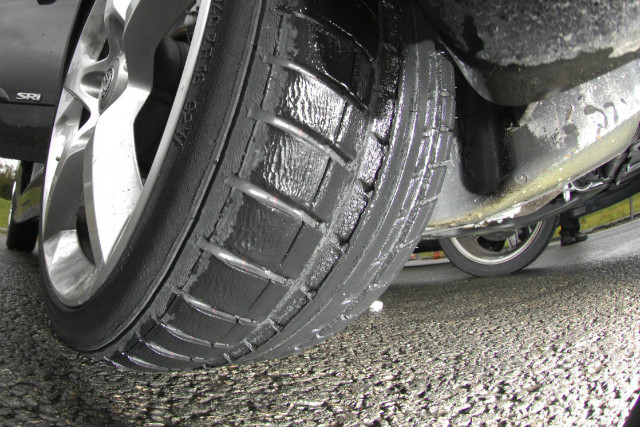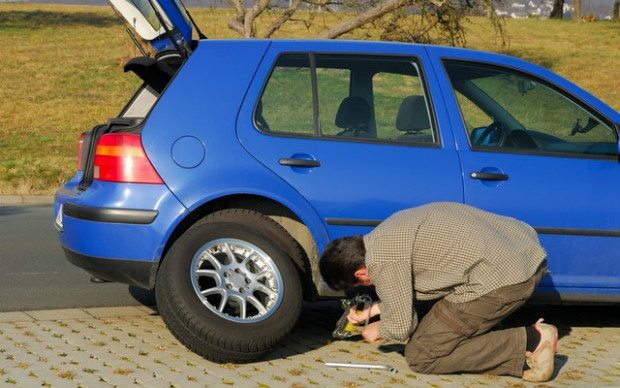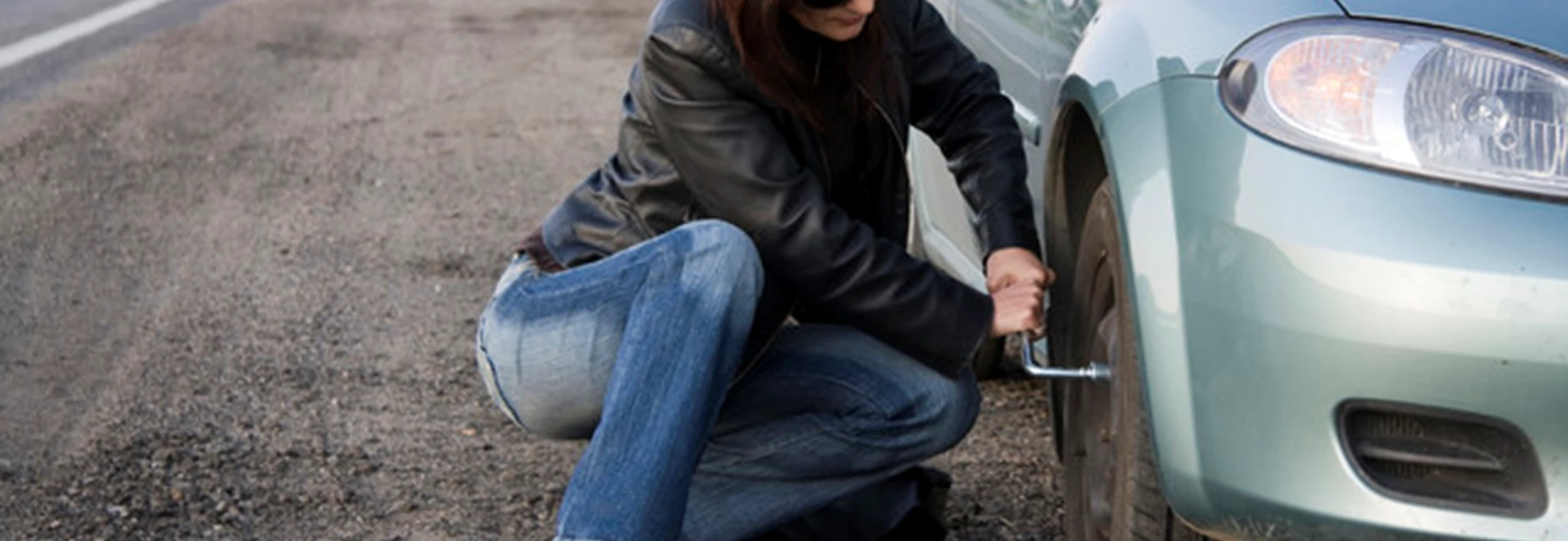However careful you are on the road, there’s always the possibility that your car could end up with a flat or punctured tyre while on the move. Therefore it’s very useful to know how to change one of your car’s tyres should a problem suddenly arise.
Here we’ll give you a straightforward guide on how to change a flat tyre on a car, with some useful tips to keep safe during the process.
What do I need to change a tyre?
Tools
Before you can even start a tyre change, you’ll need the right equipment. Besides the spare tyre itself of course, you’ll also need a car jack and the correct wheel-nut wrench. It’s always best to keep all of this in your car, in case you need to change a tyre while far away from home.
You may also need a knife or cutters to remove cable ties if these are used to hold your car’s wheel trims in position.
A torch and reflective jacket are both good to have as well, in case you need to make a tyre change in the dark. It’s also handy to have with you a pair of gloves and something to kneel on since the ground and the tyre itself will likely be dirty.
It’s also a good idea to have your vehicle’s handbook, since that should show you the carjacking points, to avoid any damage.
Spare wheel
A spare wheel can come in two forms. It could come as simply a standard wheel with a regular tyre but there are also space-saver wheels. The latter feature in some new cars as a spare, as oppose to a regular tyre, in order to reduce the impact on boot space.
If you need to swap one of your car’s regular tyres for a space-saver, then the car should only be used to drive to a garage where you can get the regular tyre fixed or replaced.

For most space-saver tyres, you are typically limited to a top speed of 50mph, as going over that becomes unsafe. While using a tyre like this, some dashboard warning lights may come on such as for traction control or the anti-lock brakes. This is likely just the car reacting to the inconsistency of the tyres.
How do you change the tyre?
Prepare your car for the tyre change
Find a suitable location to change the tyre on your car and when you do, switch off the engine, apply the handbrake and leave the car in first gear (or Park if it’s an automatic). Don’t let anyone sit inside the car while a tyre change takes place. Also ensure you have the locking wheel nut and any other tools before you begin, as you won’t be able to access the car when it’s jacked up.
Chock the road wheel that’s diagonally opposite the one to be replaced, using a heavy object like a brick or a large wedge. Once everything is set up, remove any fitted wheel trim on the tyre you’re replacing.
Use your car jack
Place your car jack in the recommended lifting point closest to the wheel that’s being removed. Putting the jack anywhere other than where it’s recommended could be unsafe or damage the vehicle.
Ensure the jack head engages correctly (as shown in the handbook) and then extend the jack until it begins to take some load.
Remove the wheel
Use your wrench to slacken off the wheel nuts or bolts used to attach the appropriate tyre. For most cars you have to turn the wrench anti-clockwise to undo the nuts.
When all the nuts/bolts are loose, continue jacking the car until the tyre is off the ground. Then carefully remove the wheel and position the spare tyre in its place.
Fit the replacement
Fitting the replacement tyre essentially requires doing a reversal of the procedure you do to remove the original. When the new tyre is in place, tighten the nuts on it by hand first, then carefully lower the wheel back on to the ground before fully tightening the nuts with your wrench.

Is it safe to change the flat tyre?
A flat tyre is a car issue that you’ll want to remedy straight away if it occurs but it’s also a problem that can occur virtually anywhere. Before beginning to try and undertake a change of a tyre on your car, you should assess the area you’re in now is a safe enough environment to undertake such a task
Motorway
If you get a flat or punctured tyre on the motorway, then you will want to pull into the hard shoulder in a swift and safe manner.
The hard shoulder, however, is not a suitable place to change a car tyre. You’ll want to either turn off the motorway first or, if that’s not possible, call for breakdown assistance and get a recovery vehicle to pick you and your car up.
Normal roads
Attempting to change a tyre on the side of a public road is generally not a good idea and should be avoided. If you have to pull over on a normal road because you have a flat tyre, it’s best to call for roadside assistance.
At home
If you have a driveway at home then this could be an ideal area to change a flat tyre. That’s provided your driveway has a hard and flat surface to put your car on. If you have a gravel driveway at home, find somewhere else to change your car’s tyre as trying to do so on a soft, loose or uneven ground is dangerous.
Competency
Changing a tyre of course require not only the tools and the know-how but also the confidence you can do the task confidently.
If you need to change a car tyre but you haven’t done it before and you’re not feeling confident that you can do the job properly, then you could always get someone else to do it. Call either roadside assistance and get a trained professional to change the tyre or ask a family member who’s comfortable with the job to do it for you.




